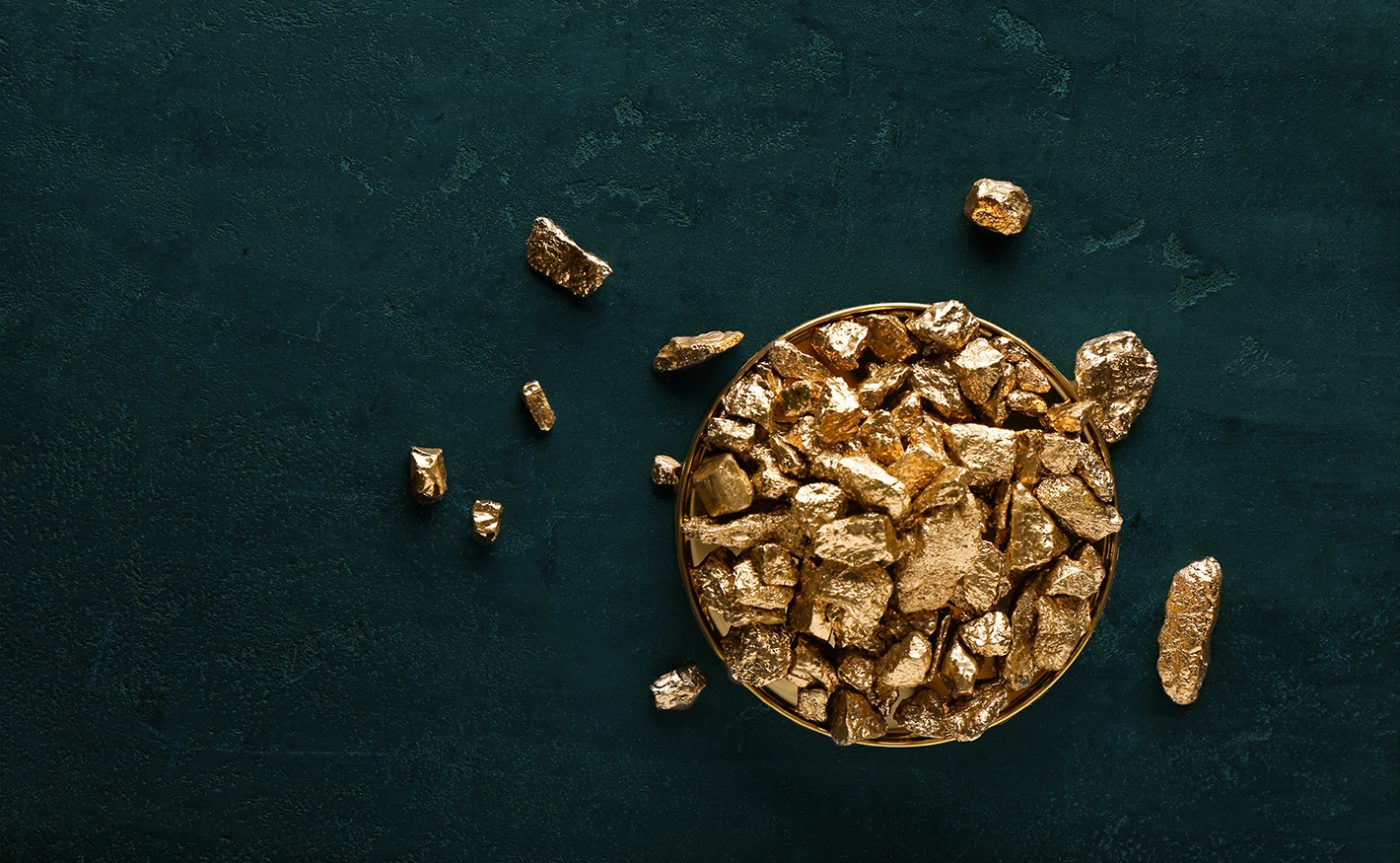This blog answers the most frequently asked questions about investing in gold in Australia.
We’ve covered why investing in gold is important in previous articles, but since gold’s run of strong performance and its concerning lack of presence in many super funds and investors portfolios, we debunk some of the confusions surrounding the precious metal, and why it belongs in your portfolio.
Here are the answers to some of our most commonly asked questions about investing in gold:
- Why do gold prices go down?
- Why do Stockspot clients all own the same percentage in gold, regardless of portfolio type?
- Why do you invest in unhedged gold rather than a USD hedged gold ETF?
- Why haven’t you increased its gold exposure further?
- Why do you invest in gold bullion rather than ASX listed gold mining shares?
- What could replace gold in a balanced portfolio?
- Should I reduce my gold allocation given it’s at new highs?
Why do gold prices go down?
Gold has a low correlation to other asset classes
Despite a period of strong returns from the asset class, there will be (and has historically been) periods where gold prices will fall as other asset classes shine.
During the first half of 2020 share market volatility rocketed to levels not seen since the 1987 crash due to COVID-19, during this period gold prices dipped, but this was simply an indication of gold doing its job.
Gold tends to be viewed as a safe haven, because when other assets like shares are falling, gold often rises.
If gold is down, it is actually a good thing because it means the rest of your portfolio is likely doing well. Gold is an insurance policy, and when share markets fall, which they inevitably do, you’ll be happy you own it.
As real interest rates go down, the gold price tends to go up (and vice versa).
A “real interest rate” is the interest rate adjusted for inflation.
Gold’s price is inversely related to real interest rates, which are adjusted for inflation. When real interest rates fall, gold becomes more attractive because the opportunity cost of holding gold (which provides no yield) decreases.
The opposite is also true. As the markets anticipate inflation to increase and long term interest rate rises, gold prices typically decline.
During the economic fallout of Covid-19 central banks around the world were printing money and keeping interest rates low until there is meaningful inflation, this created a major reason for investors to turn to gold. Gold remains a valuable asset in any investor’s portfolio, acting as protection against currency devaluation and inflation.

Why do Stockspot clients own all the same % in gold regardless of portfolio type?
Our allocation to gold across all portfolios is just under 15% after we increased it from 12.3% in February 2021. This also follows the increase to Gold in 2017 to 12.3% from 10%.
We believe this is the optimal allocation to gold in the current environment, to complement the growth and defensive characteristics of the other assets.
Why do you invest in unhedged gold rather than a US Dollar (USD) gold ETF?
Our clients hold gold in Australian dollars via the GOLD ETF rather than U.S. dollars which means clients own ‘unhedged’ gold. There are a couple of important reasons for this.
Unhedged gold helps to protect your portfolio against a devaluation of the Australian dollar.
One of the main reasons to own gold is to protect your purchasing power and defend against the debasement of your home currency. For Australians this is the Australian dollar. Therefore we don’t think it makes sense to hedge your gold.
Unhedged gold provides better diversification when markets fall.
A second reason is that the Australian dollar tends to decline more than the U.S. dollar when the share market falls. Owning gold in Australian dollars magnifies the defensive characteristics of gold in your portfolio. This is exactly what happened during the GFC in 2008 and COVID-19 in 2020.
Historically, the unhedged GOLD ETF has outperformed the hedged gold ETF (QAU), with GOLD returning 10.7% p.a over the last decade (as at 31 December 2024), compared to the 6.3% pa return of the hedged ETF QAU.
Why hasn’t Stockspot increased its gold exposure further?
Strategic Asset Allocation (SAA) is about having an asset allocation that can weather different market conditions rather than trying to guess which asset is going to perform best.
Stockspot’s portfolios spread money across different investments that often move in opposite directions to each other. This has helped the portfolios weather the COVID-19 market volatility and deliver positive returns and why they have continued to deliver positive returns for 10 out of the past 11 years.
Increasing the amount of gold in our portfolios when the price is low is not a sound strategy. Naturally, through our automatic rebalancing, as the price drops lower we may trim some profit from shares and allocate it towards gold. Based on our modelling, a 14.8% allocation to gold is the correct allocation for the current market environment. Our allocation is already significantly higher than almost all diversified funds who generally allocate between zero and 5% to gold.
Why do you invest in gold bullion rather than gold mining shares?
There’s a lot to consider when deciding the best way to invest in gold.
Gold mining shares/gold miners are easy to trade on the share market, but they don’t provide the same defensive characteristics as physical gold. They have higher correlation to shares, and will not always perform the same as physical gold because of operational decisions, hedging and capital management.
Many gold miners fell by 90% or more between 2011 and 2015 when the gold price fell from AU$1820 to AU$1320 (a fall of only 27%).
What could replace gold in a balanced portfolio?
Investors often discuss alternatives to gold, and the below assets come up as possible replacements for gold in a balanced portfolio.
Silver
While silver may seem as a suitable alternative to holding gold in a portfolio, it does not provide the same store of value given the wider scope of practical and industrial use. For example, during the GFC, silver was relatively flat, whereas gold was up close to 40%.
Bitcoin
Some have suggested that assets like bitcoin could replace gold as a defensive store of value given the digital trust network it has created. This may be possible in the future however for now, cryptocurrencies such as bitcoin are significantly more volatile when compared to gold.
Should I change my gold allocation?
It’s tempting to make changes to your portfolio after one asset rises. or falls – but we take care of this with automatic rebalancing. Automatic rebalancing means you’re never over-exposed to an asset after a sharp price rise or fall.
If you’re looking for a financial advisor to manage your investments, find out how Stockspot can match you with a risk-aligned portfolio to help your wealth building journey.




